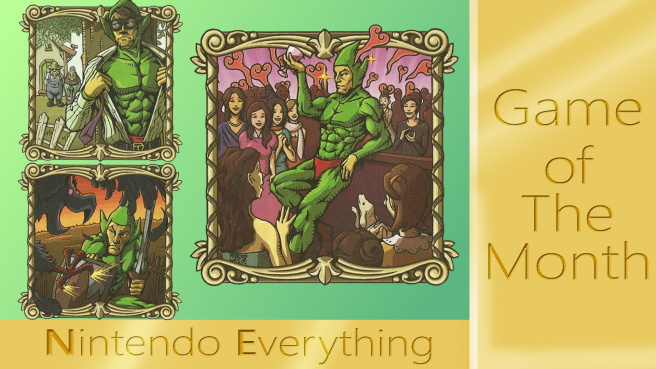[Feature] Tingle: The Man Behind the Magic
If you ask someone what the most striking and memorable thing about The Legend of Zelda: Majora’s Mask is, they’d probably answer with the whole three-day cycle gimmick, Link’s many transformations or the creepy moon. But if you held a gun to their head and whispered “it’s Tingle” into their ear, they’d undoubtedly say it was this charming fellow. The life and legacy of Tingle isn’t extensively documented and leaves many unexplored questions. Is he human? Is he a fairy? Is he an offensive gay stereotype? But despite his mysterious nature, Tingle is a crucial character to the development of the Legend of Zelda series. In fact, there are no less than four different games out there with Tingle’s name in the title, which makes him just as important to the franchise as Link, whose name usually only appears as part of a lame pun. Just as the tale of the Hero of Time and the Triforce is constantly being retold, so too is the story of this unsung legend.
As a child, Tingle always sought the limelight. His dreams of fantastical worlds and becoming a fairy persisted into adulthood where he attempted to kickstart his acting career while working as a balloon salesman. Though rejected for his looks and personality quirks, Tingle remained persistent, finally landing a minor role in a local production of A Midsummer Night’s Dream. Surprisingly, his unique acting style drew crowds as audiences showed up just to see this middle-aged guy in green overacting. His newfound fame going to his head, Tingle followed up this stunning performance by auditioning for a part in The Legend of Zelda: Majora’s Mask.

Rumour has it that Tingle initially applied for the role of Tatl, but was turned down. While drowning his sorrows in a bowl of ramen after the failed audition, he apparently had a chance encounter with Nintendo composer Koji Kondo. The two hit it off thanks in part to their mutual resemblance, and the duo spent all night drinking and playing Panel de Pon. So taken was Kondo with his new friend that he pulled a few strings and prepared a special role in Majora’s Mask. And so, the Tingle we all know and love finally hit the video game scene with his breakout performance.
Cast as an oddball mapmaker, Tingle helped out Link by providing guidance for navigating the world of Termina. According to Majora’s Mask director, Eiji Aonuma, Tingle seemed like a natural fit for the role. “It was like he wasn’t even acting,” Aonuma claimed. “The whole balloon thing was actually his idea – he just walked into the studio with a whole bunch of balloons tied to his back. We all thought that was pretty f***ing hilarious so we decided to run with it.” With his charming magic words of “Kooloo-Limpah!” (not to be confused with Kuala Lumpar), Tingle charmed players worldwide and it’s hard to imagine Majora’s Mask without him.
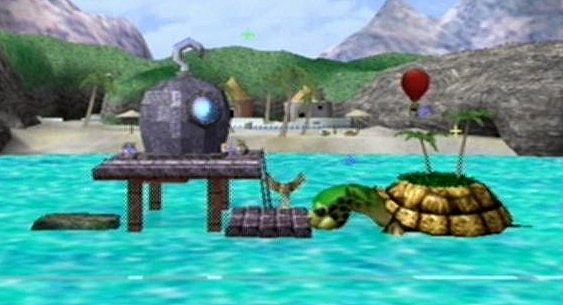
Tingle reprised his Majora’s Mask appearance a few years later in Super Smash Bros. Melee. His role as a platform on the Great Bay stage proved so popular that he was brought back as an assist trophy in subsequent instalments of the series. “Tingle was certainly an interesting character to work with,” said director Masahiro Sakurai. “We tried to show off his unpredictable nature in the way he causes random effects when summoned. There are no plans to make him a playable character, though, so please stop asking me. I don’t even read your Miiverse comments.”
Tingle took on even more responsibility in 2003’s The Legend of Zelda: The Wind Waker. Here his passion for photography resulted in him being cruelly imprisoned for stealing a Picto Box, but after being freed he became an essential character to the game’s storyline. Link’s journey to reassemble the Triforce of Courage would be impossible without the assistance of his fairy friend in deciphering maps and surely Tingle’s charm alleviated some of the tedium that came with the quest. He also assisted players through the use of the Tingle Tuner; a helpful device that used the Game Boy Advance to drop bombs, heal Link and grant other bonuses.
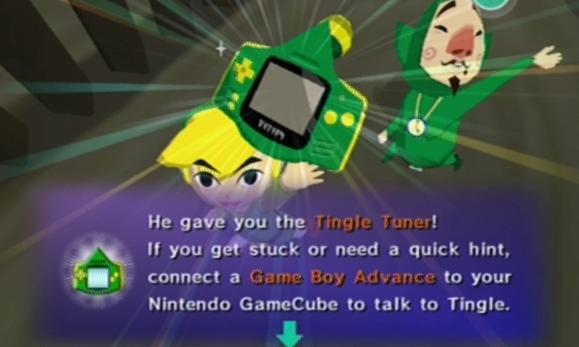
Wind Waker also fleshed out much of the Tingle mythos, giving him his own island home – the creatively titled “Tingle Island”. It also introduced Tingle’s two brothers, Ankle and Knuckle. Though the character of Tingle’s father in Majora’s Mask was undoubtedly based on his real parents’ disapproval of his alternate lifestyle, whether these characters were based on Tingle’s own siblings remains to be seen. One would certainly hope not, as their relationship involved Tingle essentially enslaving them and forcing them to work on his island. Perhaps this was a sign of things to come, as Tingle’s callous attitude towards workers’ rights would prove to be his downfall in the titles that followed.
After a handful of brief cameos in The Legend of Zelda: Four Swords Adventures and The Minish Cap, Tingle took a break from his regular appearances in the Zelda series. Perhaps his cartoonish style was at odds with the new direction of Twilight Princess and Skyward Sword. In an attempt to appease the rising star, Nintendo contracted developer Vanpool to create a semi-autobiographical Nintendo DS game with his assistance. The end result, Freshly-Picked Tingle’s Rosy Rupeeland told the story of Tingle’s transformation into his fairy persona and bizarre fixation on money. Finding and spending Rupees was crucial in this game, as the currency was used to build a tower, bargain for essential items, and hire bodyguards. Despite being quite different from the usual Zelda games, Tingle’s title was a surprise commercial success. A localised version made it to European territories, however the game went unreleased in the US, possibly due to the longstanding feud between Tingle and Nintendo of America’s Reginald “Reggie” Fils-Aime. Reportedly tensions between the two began during a rehearsal for Nintendo’s 2004 press conference where an intoxicated Tingle stormed the stage instead of a Master Sword-wielding Shigeru Miyamoto. “That’s ancient history,” claimed Reggie. “Tingle and I have put our pasts behind us, but if you’re interesting in learning more about Tingle’s past, you should buy Majora’s Mask 3D – now available for the Nintendo 3DS and NEW Nintendo 3DS XL. Play the games.”
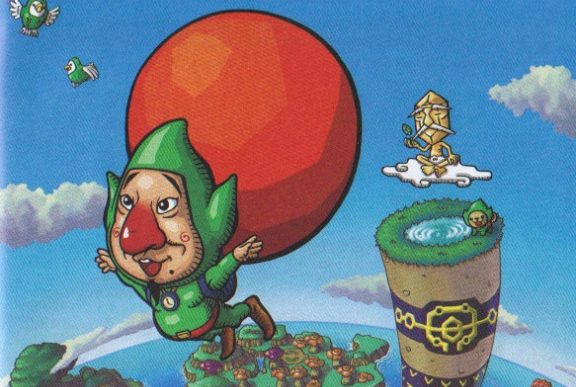
Despite this, Tingle remained strangely popular with Japanese audiences and even appeared in a reimagining of the NES classic Balloon Fight. Tingle’s Balloon Fight DS was only made available as a Club Nintendo reward, but surely it was enough to tide rabid Tingle fans over until the release of a sequel to Rosy Rupeeland. However, this sequel faced a troubled production. Tingle was given greater creative control over the project, which would be titled Tingle’s Balloon Trip of Love, but quickly proved to be unsuitable for directing a game of this scale. Vanpool staff (who wished to remain anonymous) spoke of sudden changes to the game’s direction and strange requests made by Tingle throughout development. “He was really hooked on Tokimeki Memorial at the time,” said one staff member, “He requested that we turn the game into a dating sim, but then he wanted it to be set in the world of The Wizard of Oz as well. He’d just come in with random requests like insisting that the Tin Man’s breasts be larger.”
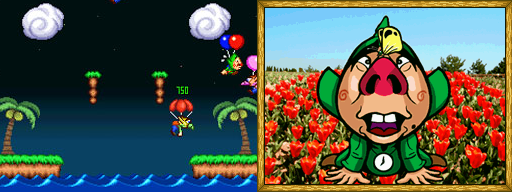
While Tingle’s contribution lent an oddball charm to the game, it was clear that production would have gone more smoothly had he been less demanding. “He told me I would be fired unless I immediately brought fifty empty bottles to his office”, said one ex-Vanpool employee. “When I asked what they were for he just stared directly at me and said ‘to keep the fairies, of course.’” The final game was quite well received by audiences, who praised the bizarre “Love Push” system and the way different characters could use their strengths to solve puzzles, but it was clear Nintendo was frustrated with Tingle. The minigame-heavy Too Much Tingle Pack, which was released on DSiWare to promote the release of Balloon Trip of Love, ended up being correct and there did in fact seem to be too much Tingle.
Seemingly oblivious to the disdain of his co-workers, Tingle decided to hit the big time and travel to Hollywood in pursuit of his dreams. However, his plans of producing Tingle: The Movie fell through and Tingle found himself selling maps of celebrities’ houses just to stay in the black. The former star fell out of the public consciousness and into a downward spiral of depression and drug abuse. This self-destructive behaviour continued for several years until his close friend Lanky Kong sadly passed away due to a heroin overdose. Lanky’s fall from grace (metaphorically speaking, since he reportedly had no grace to begin with) prompted Tingle to re-evaluate his life, beginning the long road of rehabilitation and making amends with staff at Nintendo.

In September 2013, Tingle finally returned to the world of video games in the Wii U’s HD remaster of The Legend of Zelda: Wind Waker. Though his role in the game was slightly diminished due to the removal of the Tingle Tuner, his first role in years won over modern audiences just as he did a decade ago. Now Tingle has returned both in the 3DS remake of Majora’s Mask and as a downloadable character in the crazy crossover, Hyrule Warriors, it’s safe to say that this star is finally back to his former glory. Truly 2015 will be The Year of Tingle.
